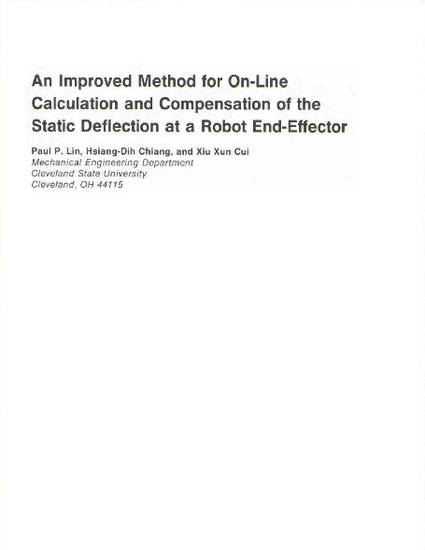
Traditionally, robotic deflection analysis for a low-weight robot has been performed based on an assumption that each link is treated as a cantilever beam, which leads to no angular deflection at a joint. In practice, a robotic intermediate joint is linearly and angulary deflected when a load is applied at the end-effector. It is found in this study that the additional link deflection resulting from the angular deflection of a robotic revolute joint substantially contributes to the end-effector's total deflection. This article presents an improved method via a combination of classical beam theory, energy methods and the concepts of differential relationships to more accurately calculate the static deflection at the end-effector. A systematic approach to deflection calculation through three different Jacobians are presented. The study also shows that the end-effector's deflection heavily depends on robotic arm configurations. The deflection is then compensated based on the selected optimum configuration. The theoretical deflection analysis is verified by experimental results. A planar two-link robot and a six-degree-of-freedom Elbow Manipulator are used for numerical illustration and calculation procedure.
